 Your new post is loading...
 Your new post is loading...
A simple guide to reinforcement learning for a complete beginner. The blog includes definitions with examples, real-life applications, key concepts, and various types of learning resources.
AI is sending up the Bat-signal and synthetic data is answering the call for more robust, powerful, and less-biased AI systems.
Deep-learning algorithms such as AlphaFold2 and RoseTTAFold can now predict a protein’s 3D shape from its linear sequence — a huge boon to structural biologists.
Via Gerd Moe-Behrens
Complex systems may have billion components making consensus formation slow and difficult. Recently several overlapping stories emerged from various disciplines, including protein structures, neuroscience and social networks, showing that fast responses to known stimuli involve a network core of few, strongly connected nodes. In unexpected situations the core may fail to provide a coherent response, thus the stimulus propagates to the periphery of the network. Here the final response is determined by a large number of weakly connected nodes mobilizing the collective memory and opinion, i.e. the slow democracy exercising the 'wisdom of crowds'. This mechanism resembles to Kahneman's "Thinking, Fast and Slow" discriminating fast, pattern-based and slow, contemplative decision making. The generality of the response also shows that democracy is neither only a moral stance nor only a decision making technique, but a very efficient general learning strategy developed by complex systems during evolution. The duality of fast core and slow majority may increase our understanding of metabolic, signaling, ecosystem, swarming or market processes, as well as may help to construct novel methods to explore unusual network responses, deep-learning neural network structures and core-periphery targeting drug design strategies. Fast and slow thinking -- of networks: The complementary 'elite' and 'wisdom of crowds' of amino acid, neuronal and social networks
Peter Csermely http://arxiv.org/abs/1511.01238 ;
Via Complexity Digest
A new theory can explain the formation of swarming patterns observed in ensembles of self-propelled polar particles.
Via Eugene Ch'ng
The next big ideas from 'Idea Man' Paul Allen: AI and cell biology NBCNews.com Software billionaire Paul Allen is already using his riches to further brain science, spaceflight, rock 'n' roll history — and oh, the Seattle Seahawks, too — but he's...
Dr. Arend Hintze E-mail: ude.usmnull@eztnih CV Well, I am looking for a job – a faculty position to be exact.
Networks of interconnected nodes have long played a key role in cognitive science, from artificial neural networks to spreading activation models of semantic memory. Recently, however, a new Network Science has been developed, providing insights into the emergence of global, system-scale properties in contexts as diverse as the Internet, metabolic reactions or collaborations among scientists. Today, the inclusion of network theory into cognitive sciences, and the expansion of complex systems science, promises to significantly change the way in which the organization and dynamics of cognitive and behavioral processes are understood. In this paper, we review recent contributions of network theory at different levels and domains within the cognitive sciences. Networks in Cognitive Science Andrea Baronchelli, Ramon Ferrer-i-Cancho, Romualdo Pastor-Satorras, Nick Chater, Morten H. Christiansen http://arxiv.org/abs/1304.6736
Via Complexity Digest
Scientists find further evidence that crabs and other crustaceans feel pain and then take steps to avoid it.
What’s the difference between machine learning, deep learning, big data, statistics, decision & risk analysis, probability, fuzzy logic, and all the rest? None, except for terminology. William Briggs gives a masterclass in explaining terminology currently bounding through the worlds of big data, analytics and data. Worth reading.
Intersting article by John Markoff on artificial neural networks and learning theorems and big data problems. Using an artificial intelligence technique inspired by theories about how the brain recognizes patterns, technology companies are reporting startling gains in fields as diverse as computer vision, speech recognition and the identification of new molecules... Click on the title to learn more.
Long but interesting interview with linguist Noam Chomsky fom the Atlantic, on A.I. Wether you agree or disagree with his views on computation and intelligence and the directions taken by AI community and neuroscience - it makes for a stimulating read. Click on the image or the title to learn more.
Health care in the United States certainly needs an overhaul. The question is whether that overhaul will come from artificially intelligent doctors. IBM has launched partnerships with insurance giant WellPoint and the Sloan-Kettering Cancer Center in New York and is expected offer Watson commercially to hospitals within the next few years. Wired article discusses the approach and pros and cons as seen by some doctors. Worth a read for a quick intro to modern AI comprising data mining and big data topics as an approach to treatment diagnostics in healthcare. Click on the image or the title to learn more.
|
Hugging Face has released a free course on Deep RL. It is self-paced and shares a lot of pointers on theory, tutorials, and hands-on guides.
Browse the GTC conference catalog of sessions, talks, workshops, and more.
Scientists are exploring a mysterious pattern, found in birds’ eyes, boxes of marbles and other surprising places, that is neither regular nor random.
Accessing information efficiently is vital for animals to make the optimal decisions, and it is particularly important when they are facing predators. Yet until now, very few quantitative conclusions have been drawn about the information dynamics in the interaction between animals due to the lack of appropriate theoretic measures. Here, we employ transfer entropy (TE), a new information-theoretic and model-free measure, to explore the information dynamics in the interaction between a predator and a prey fish. We conduct experiments in which a predator and a prey fish are confined in separate parts of an arena, but can communicate with each other visually and tactilely. TE is calculated on the pair’s coarse-grained state of the trajectories. We find that the prey’s TE is generally significantly bigger than the predator’s during trials, which indicates that the dominant information is transmitted from predator to prey. We then demonstrate that the direction of information flow is irrelevant to the parameters used in the coarse-grained procedures. We further calculate the prey’s TE at different distances between it and the predator. The resulted figure shows that there is a high plateau in the mid-range of the distance and that drops quickly at both the near and the far ends. This result reflects that there is a sensitive space zone where the prey is highly vigilant of the predator’s position. Information Dynamics in the Interaction between a Prey and a Predator Fish
Feng Hu, Li-Juan Nie and Shi-Jian Fu Entropy 2015, 17(10), 7230-7241; http://dx.doi.org/10.3390/e17107230 ;
Via Complexity Digest, Phillip Trotter
My preferred job title is 'theorist', but that is often too ambiguous in casual and non-academic conversation, so I often settle for 'computer scientist'. Unfortunately, it seems that the overwhelming majority of people equate ...
ECAL 2013, the twelfth European Conference on Artificial Life, presents the current state of the art of a mature and autonomous discipline collocated at the intersection of a theoretical perspective (the scientific explanations of different levels of life organizations, e.g., molecules, compartments, cells, tissues, organs, organisms, societies, collective and social phenomena) and advanced technological applications (bio-inspired algorithms and techniques to building-up concrete solutions such as in robotics, data analysis, search engines, gaming). Advances in Artificial Life, ECAL 2013 Proceedings of the Twelfth European Conference on the Synthesis and Simulation of Living Systems Edited by Pietro Liò, Orazio Miglino, Giuseppe Nicosia, Stefano Nolfi and Mario Pavone http://mitpress.mit.edu/books/advances-artificial-life-ecal-2013
Via Complexity Digest
In a general sense, a Markov Network Brain (MNB) implements a probabilistic finite state machine, and as such is a Hidden Markov Model (HMM). MNBs act as controllers and decision makers for agents ...
Ingredients for the Semantic Sensor WebJožef Stefan InstituteLjubljana, SloveniaSeptember 23rd 2011Oscar CorchoFacultad de Inform
Good inverview with Dr. Jürgen Schmidhuber, Director of the Swiss Artificial Intelligence Lab, IDSIA. His research team’s artificial neural networks (NNs) have won many international awards, and recently were the first to achieve human-competitive performance on various benchmark data sets. IDSIA are probably the current world leaders in ANN research and the quality of what they do is rather insipiring. worth reading.
Interesting article in The New York Times on Jeff Hawkins (of Palm computer fame) new company Numenta. Their Grok product uses a complex artificial neuron model to build predictive analytics from sensed data. Worth reading. Click on the image or the title to learn more.
Something scientists have come to understand is that slime molds are much smarter than they look. One species in particular, the SpongeBob SquarePants–yellow Physarum polycephalum, can solve mazes, mimic the layout of man-made transportation networks and choose the healthiest food from a diverse menu—and all this without a brain or nervous system. "Slime molds are redefining what you need to have to qualify as intelligent," Reid says.
Via Dr. Stefan Gruenwald, Complexity Digest
Wired has an interesting article on mobile computing. As ARM seeks to put cell phone chips into our supercomputers, Intel is doing the reverse. The lines between the mobile hardware and data center hardware are blurring. Intel’s experimental Single-chip Cloud Computer project, or SCC is a 48 core chip acts as a “network” of processors on a single chip, with two cores per node. The nodes actually communicate to each other much the same way nodes in a cluster in a data center would. While these types of architectures are today used in big data applications that run on a server cloud environment there are actually many cases where a hybrid model would make the most sense including artificial intelligence, machine vision and augmented reality applications. Click on the image or the title to learn more.
|
 Your new post is loading...
Your new post is loading...
 Your new post is loading...
Your new post is loading...









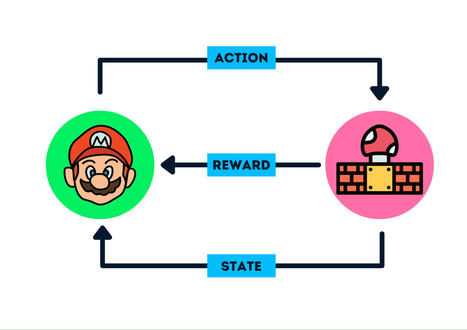



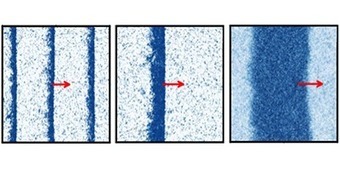
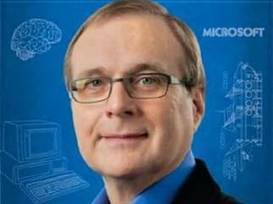
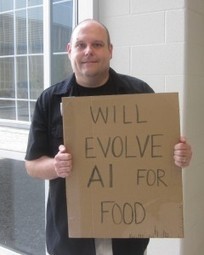




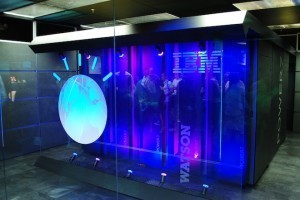
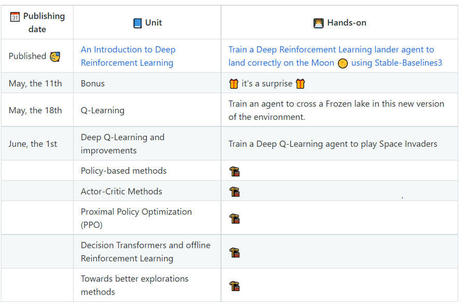
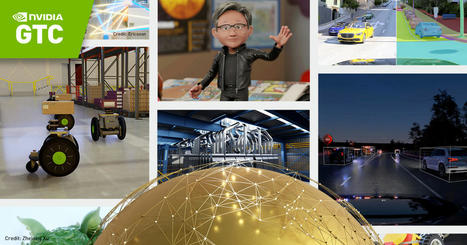
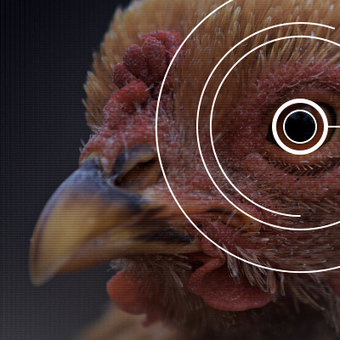
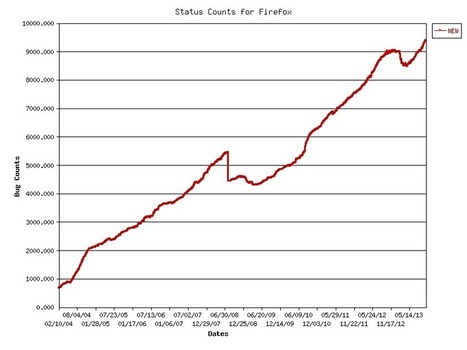
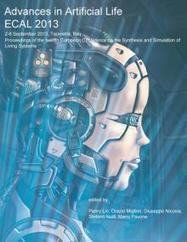
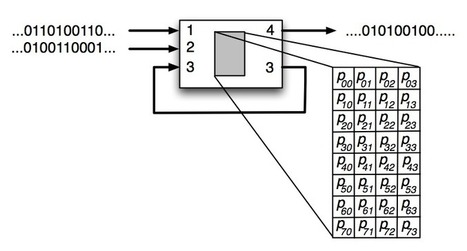



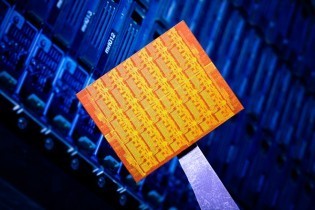





Need a quick intro to Reinforcement Learning but don't have time to work though the HuggingFace course highlighted in our other post -then - take this quick primer from KDNuggets - and work through the related materials. You will be up to speed in no time. Recommended.